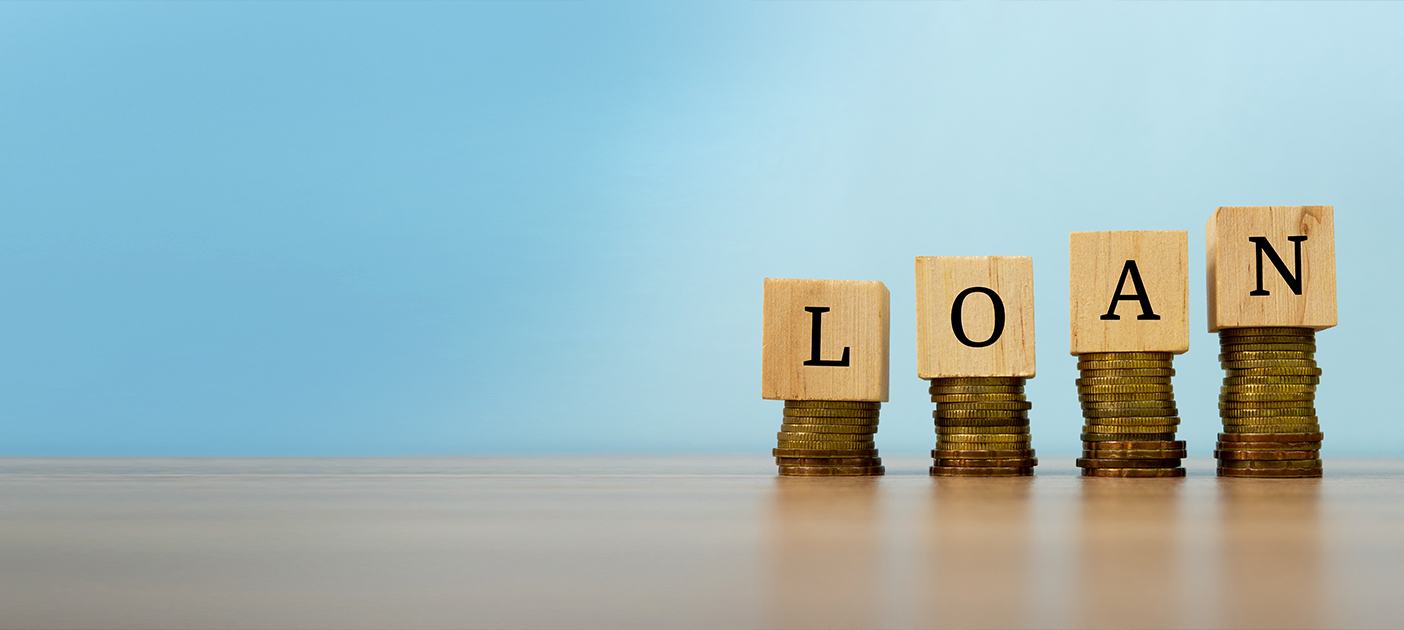![]()
If you’ve only got a minute:
- The common types of unsecured loans include personal loans, lines of credit, credit cards, balance transfers, and a debt consolidation plan.
- An unsecured loan is multi-purpose, granted based on your credit worthiness, and can be either on a term or revolving basis.
- Your credit score plays a part in determining the loan amount you can get.
Debts can mount due to unaffordable lifestyle choices and unexpected situations and offer little long-term benefits. However, when strategically used, debt instruments like loans can be a useful tool to help manage your finances.
Choosing the appropriate loan depends on your purpose for the funds, intended repayment schedule, and existing financial situation, among others.
Most of us are better acquainted with secured loans like home mortgages and car loans. These loans are backed by collateral, which means that in the event of a loan default, the lender is able to seize ownership of the asset that it provided the loan for.
Unsecured loans
Unsecured loans are not backed by any collateral, which partly explains why they have a higher cost of borrowing or interest rates compared to secured loans. This compensates lenders for the additional risk they are taking on.
Multi-purpose
Unsecured loans can be taken for a variety of purposes from buying furniture or household appliances for a new home to funding a wedding or honeymoon. That said, do consider your affordability and spend within your means.
They can even be used to consolidate your existing debts with different banks and financial institutions under a single financial institution for ease of managing and repayment.
Dependent on the borrower’s creditworthiness
How much you are eligible to borrow depends on the banks' assessment of your creditworthiness (i.e. your ability to repay on time). This, in turn, is influenced by factors like monthly salary and other loan commitments.
Term or revolving
An unsecured loan can be granted on a term or revolving basis. This determines the duration of your repayment.
Term loans have a fixed number of repayments to be made over a predetermined period of time.
With revolving loans, the bank offers a pre-specified fixed limit known as the “credit limit”. If this limit has been reached, you are unable to borrow until some of it is repaid. Borrowers are required to make a minimum repayment monthly but there is no fixed date to make full repayment.
When you borrow, funds are drawn down from the available credit limit. Subsequently when the funds are repaid, the credit limit is restored.

Common types of unsecured loans
There are 5 common types of unsecured loans. Having a better understanding of their key characteristics and purposes will allow you to select the ones most suited to your current needs.
1. Personal loan
A personal loan is a general-purpose loan from the bank, and there are generally no restrictions to what you can use it for. They are disbursed for a fixed term and have to be repaid in regular intervals.
The DBS Personal Loan allows you to borrow up to 10 times of your monthly salary at a fixed interest rate (from 2.68% p.a.) with an additional processing fee of 1%. The effective interest rate (EIR) works out to 5.43% p.a.. The loan tenure ranges from a period of 6 months to 5 years.
This is useful if you are making planned big-ticket purchases such as furniture for a new home but do not want to liquidate your investments.
Tip: As personal loan interest rates are relatively lower than credit card interest rates, take it if you qualify for it.
Read more: Personal loans vs line of credit
Find out more about: DBS Personal Loan

2. Credit card instalment plan
A credit card instalment plan allows you to spread your repayments over a fixed period for credit card purchases. This is similar to a Buy Now Pay Later (BNPL) scheme, except BNPL schemes do not require the payments to be made on a credit card.
A credit card instalment plan offers the flexibility of choosing a repayment term (usually from 3 to 24 months). However, as this is a revolving loan, your available credit limit will be reduced by the amount of the loan until it has been fully repaid.
There are usually penalties or administration fees involved in making early repayment.
DBS offers 2 types of credit card instalment plans.
Instalment Payment Plan (IPP)
IPPs are taken up at the point of purchase at retailers. These plans often offer 0% interest and fees if you pay instalments on time and are shopping at a “participating merchant”. Under this plan, your purchase will not be eligible for reward points, if any.
My Preferred Payment Plan
This plan is applicable to post-sales transactions above $100 charged to a DBS/POSB credit card. Like the IPP, this offers 0% interest (for up to 24 months) if you pay instalments on time. However, there are processing fees of 2% to 6%, depending on the tenure of the plan.
A credit card instalment plan is useful if you need to make a big payment but do not want to block up a large part of your cashflow at one go. Just be sure to repay your instalments in a timely manner.
Tip: Even if you have enough cash on hand for the purchase, these 0% instalment plans may still be attractive. It can free up your cash for alternative uses to earn more interest, such as placing it in a term deposit or investment.
Read more: Should you Buy Now Pay Later?
Find out more about: Payment and Instalment plans for your credit card

3. Line of credit
As a revolving loan, a line of credit or credit line has no fixed repayment term but a pre-specified credit limit.
You will not be charged any interest until you utilise (or drawdown from) the line of credit. However, there is usually an annual fee involved in opening and maintaining a credit line.
DBS Cashline is an example of a line of credit. It offers funds of up to 10 times your monthly salary for an annual income of $120,000 and above at an interest rate of around 22.9% p.a. (approximately 0.07% per day). While this is higher than the typical interest charged for a personal loan, it is still lower than that for credit cards.
A line of credit is useful for those who need convenient and easy access to cash for short periods of time (e.g. a few months) but do not know when exactly it is needed.
As interest is only charged when you tap the credit line, it may work out to be cheaper than taking a personal loan where interest is charged for the loan tenure regardless of whether you utilise the funds or not.
Tip: If you want to borrow for a longer term, it may cost less to take up a personal loan instead. Do a like-for-like comparison of your loan options before deciding which to take up.
Find out more about: DBS Cashline

4. Balance transfer
A balance transfer enables borrowers to consolidate debts from other accounts or credit cards onto a single credit card or line of credit at lower interest charges. It is common for banks to run promotions with an interest-free period of 6 to 12 months.
If you are an existing credit card or Cashline customer with DBS, you can apply for a balance transfer online without having to provide additional documents.
While there are processing and administration fees on top of the EIR, it is still a lower cost alternative compared to credit card interest charges.
A balance transfer is a useful tool to help you manage your short-term credit card or credit line debt, especially if you are struggling with repayments and interest charges.
In essence, it is giving you additional time to pay off outstanding debts at low interest rates and a consolidated view of all your debts.
Tip: After taking into account administration fees, the EIR is still lower than what is charged by credit cards. The money saved on interest payments can help in paying down revolving credit debt.
Find out more about: DBS Balance Transfer

5. Debt consolidation plan
A DCP is a debt refinancing programme that allows borrowers to consolidate all existing unsecured loan balances from different financial institutions into a single loan at a potentially lower interest rate.
A long-term plan, it allows customers to pay off debt at a more manageable pace. DBS allows you to choose from a flexible loan tenure of up to 8 years.
The loan amount granted is limited by the borrower’s total outstanding debt, interest, and any other fees. Annual interest rates can go as low as 3.58% p.a. (6.56% EIR).
Specific loans like education loans, renovation loans, medical loans and credit facilities granted for business purposes are excluded from a DCP.
Consolidating your debt with a DCP is useful if you are holding interest-bearing debt of more than 12 times your monthly income and are having difficulty paying off all your loan balances.
Tip: This is one way for Singaporeans and permanent residents who have borrowed too much to get “breathing room” of up to 8 years. It lets you consolidate and clear your debts at some of the lowest rates in unsecured lending.
Read more: Ease your financial burden with a DCP
Find out more about: DBS Debt Consolidation Plan
In summary
Whatever your reasons may be for taking a loan, it is important to do your homework before deciding on which type of loan suits you best.
This includes evaluating your need for the loan, your time horizon for loan repayment, capacity to pay on time, incoming cashflows you are expecting, and the interest rates which you will be paying on the loan, among others.







